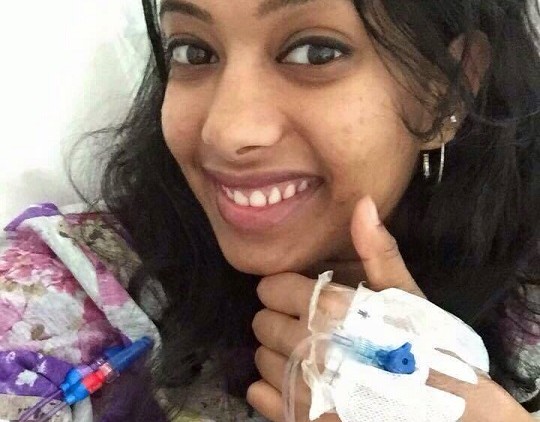By this point in time, many of us have heard of Vithiya Alphons and her campaign to find a stem cell donor. For those of you who are unaware, Vithiya is a 24 year-old 4th year optometry student from England who was diagnosed with acute myeloid leukemia (AML) in October 2015.
After several rounds of chemotherapy, it was clear that the AML was still present and a few weeks ago doctors advised that the only chance to beat the disease would be to have a stem cell transplant within two months. As a final year medical student, I am familiar with AML, its manifestations, and treatments. However, no textbook will ever be able to explain the physical and emotional pain and confusion it causes both the patient and their family. When I first heard of Vithiya’s story, I could not help but put myself in her shoes.
What would I be doing? What would my parents do? Would my family and friends be able to put together a media campaign to raise awareness in the hopes of finding a donor? Would people empathize or be willing to help? All I could picture is my Amma tearfully asking everyone she met to donate with the hopes of saving my life. It is possibly this image, and a good conversation with a fellow colleague, which prompted me to write this article.
The truth of the matter is any one of us could be Vithiya. Sure, exposure to certain chemicals, radiation, and having a genetic predisposition puts you at greater risk for AML; but many people diagnosed have no known risk factors. That is the very nature, the beauty and the irony of life itself — the uncertainty. However, it is from uncertainty that we can draw inspiration, hope, and become more aware.
Over the past month, I have come across many people who are amazing at spreading the word. Thanks to them, almost everyone I know has heard of her story and the time sensitive disposition it holds. However, there are some that feel that their ability to help ends there. Prior to Vithiya’s story, not many of us knew the importance of donating stem cells or the need to raise awareness in our Tamil community. I am guilty of the latter.
In order to be considered a match for stem cell donation, the HLA (Human Leukocyte Antigen) of both the donor and recipient must be a close match. HLA is a protein that is found on the cells of our body and they function to aid the immune system to keep check of cells that belong and intruders that do not.
Regardless of the blood and marrow donor registry you reference, they all have a common urgent need — the need for ethnically diverse stem cells. Since HLA protein markers are inherited, the likelihood of finding two people with closely resembling HLA types are higher if they are of the same ethnicity/race.
Due to the lack of members from the community that are registered as stem cell donors, when someone is faced with the need of stem cell transplant, it becomes a race against time to find a donor that has a similar HLA type. The waiting period can be the most daunting aspect of it all. Every day that goes by without a match leads to more unanswered questions and it takes an immeasurable amount of unwavering hope and determination to face each day as it comes.
By making the commitment to become a donor today, we can drastically reduce some of the agony patients and their families have to endure.
The first step in registering to become a donor includes swabbing the inner part of your cheek cells and having the sample analyzed for your HLA types. Once deemed a match, the collection of stem cells can occur in one of two ways, based on the need of the patient. It can be done peripherally, or through the bone marrow. Stem cells originate in the bone marrow, mature, and grow in the peripheral blood stream. Therefore, the cells in the bone marrow are younger and those found in the circulating blood are considered mature.
The procedure of collecting peripheral stem cells is somewhat similar to blood donation. It involves a needle placed in the arm of the donor and they remain conscious throughout. Collecting stem cells from the bone marrow is considered a surgical procedure and would require the donor to be anesthetized. Regardless, both procedures are minimally invasive and can include side effects such as fatigue, muscle pain, and headaches that may last one to two days.
Some common reasons that make many hesitant to become donors include a lack of awareness, fear of blood, needles, and inconvenience. Hopefully, with Vithiya’s campaign taking center stage and bringing the realities of cancer closer to home, many of us are able to look past our concerns and make the effort to become more involved.
Usually, the first person to get tested for HLA matching is the patient’s sibling, as they have a 1 in 4 chance (25%) of carrying the same or similar HLA proteins as the patient. Unfortunately Vithiya’s brother was only a 50% match and she needs a closer match from an unrelated donor to give her the best chance at survival.
I am sure many of us would attest to doing everything in our power to overcome our fears if it were our brother and sister who was in need of the transplant. Would it be impossible to consider Vithiya and the many others who need our help, as our own brothers and sisters in need?
If you are considering becoming a donor, or have any questions or concerns, you may find the following links helpful:
European Society for Blood and Marrow Transplantation
Australian Bone Marrow Donor Registry
For all other countries:
Worldwide Network for Blood and Marrow Transplantation









